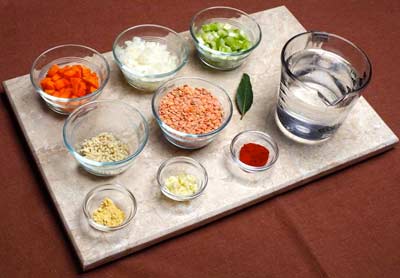
 by Steven D. Johnson
by Steven D. Johnson
Racine, Wisconsin
This month:
•
Mise en Place
•
Lot's Of Jigs? – Get Organized!
•
And Speaking Of Jigs…
•
Selecting the Best Dust Collection System (Pt. 1 of a Series)
•
New Years Gift Giving
Mise en place In Woodworking
Click on any picture to see a larger version.
I started school when kids still got "paddled" for misbehavior, when games were played with the intent to win (and win big, if you could), and there was a shop class (where we often made the paddles that were later used to blister our behinds). But the times were changing and some school administrators decided that there should be some efforts to blur the lines between the sexes. Some girls were "allowed" to take shop class, and some boys were "forced" to take a home economics class. Yep, that was my generation.
Today it seems mundane, but it was inconceivable in the mid-nineteen-sixties for a bunch of hormone-fueled adolescent cowboys in Texas to mingle in polite company with a bunch of girls, let alone to expect those boys to learn to sew, cook, or set a table for a proper dinner party. As improbable as it seemed though, I did learn a few things.
Of course I wouldn't admit it at the time, but I enjoyed the cooking part of the class. The lesson that seemed to stick to my malleable teenaged brain cells was the concept of "clean as you go" when cooking. People still marvel, even people who are way better cooks, that when I serve dinner the only things dirty are the dishes on the table. The kitchen looks as if it was unused. The idea of "clean as you go" followed me into the woodworking shop, and to this day, even on the busiest of days, my shop is almost always clean and neat.
Way past my adolescence my interest in cooking was rekindled (yes, there was a girl involved) and I took some cooking classes. "Clean as you go" was admired by the other students and greatly appreciated by the instructor, but I learned a far, far more important lesson… finally I grasped the entire meaning of "mise en place." I knew the French phrase is inferred to mean "everything in place." If you have ever seen a cooking show on television, even just surfing past looking for the ball game, you have probably noticed the cook has all the ingredients out and ready, right where and when the meal is being prepared.

|
Figure 1 - Mise En Place in the kitchen…
ingredients in place and ready to go, but there is
more to it…
|
This is a fundamental part of mise en place, but the concept goes much further. Not only are all the components out and in place, so are the needed tools. In addition, things are "prepped." For a meringue or angel food cake, the recipe may call for egg whites beaten until they form a white fluffy mound. But that egg white concoction will collapse in mere minutes, so it must be prepared in order… in other words, it is time-sensitive. Mise en place is a whole lot more than just having "everything in place." It also means "having everything ready." In literal terms, the French phrase mise en place translates to "setting up." And that is what efficient and talented cooks do.
If you are hungry for an omelet, even a neophyte would surmise that chopping the onions is best done before the eggs are cooking in the pan. Getting prepared for a glue-up is not at all dissimilar. It is not enough to merely grab a handful of clamps, a bottle of glue, and a rag and declare, "I am ready!" It is best to have clamps adjusted to the approximate correct opening size, to have clamp pads or blocks precut and in position, and to have "just in case" tools handy. A mallet or dead blow hammer for a tight fitting joint, a couple of extra clamps, an extra rag and perhaps a chisel or putty knife for cleaning squeeze-out from hard-to-reach nooks and crannies.

|
Figure 2 - Except for the parts, this looks like everything
needed for a glue-up. What is missing?
|
It is easy to see that "setting up" for a glue-up is a good idea, as we have all (unfortunately) had the experience of a glue-up that does not go smoothly… it can really ruin your day!
There are other times and places in the shop where "setting up" will contribute significantly to success, safety and efficiency. Have you ever been halfway through a rip cut at the table saw and realized you couldn't reach your push stick? Start a cut on the router table and realize there is no backer board to prevent blowout? Use a circular saw to cut plywood and realize halfway through the cut that the cord won't reach? I've done that!
The argot of woodworking is extensive, the admonitions even more so… "do a walk through," "do a dry run glue-up," "think through a cut before turning on a machine," "make a test cut," and many, many more… all valid advice and good habits to form. I suggest we co-opt from cooking the concept of "mise en place" as a catchall phrase that encompasses all these good habits. Even if your interest in cooking is nil, and your skills barely encompass a "bachelor's salad*," a little time watching a cooking show could be most enlightening.
* What is a "Bachelor's Salad" you ask?… Break a head of lettuce in half. Stand over the sink and pour a little store-bought dressing on the lettuce, take a bite. Pour a little more dressing, take another bite. When finished eating, rinse out the sink. Return bottle of dressing to the refrigerator.
(Page 1 of 5)
1
2
3
4
5
Next Page
Return to Wood News front page
